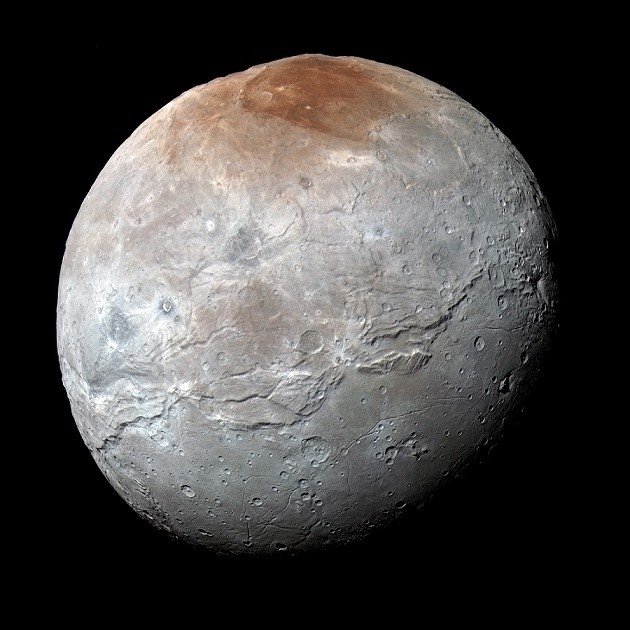NASA's New Horizons probe just beamed back the latest images from Pluto's biggest moon, Charon, revealing the first ever high definition images of the moon's complex terrain and surface. This series of new images suggests that Charon experienced a violent history since its surface is now revealing more interesting features than previously expected according to mission scientists.
Earth's moon is typically pockmarked with craters, however, scientists reveal that Pluto's moon is showing a more dynamic landscape with mountains, landslides and canyons that also vary in color across the face of Charon.
According to Ross Beyer from NASA's Ames Research Center and the SETI Institute, at first the team thought that the chances of seeing interesting features on one of Pluto's natural satellites is low however, the team is delighted of what they observed from these new images.
Charon is measured at half the diameter of dwarf planet Pluto which also the biggest moon in this system. Scientists also consider Charon not only a moon but a binary system of dwarf planets since they possess the same gravitational center.
Scientists reveal a massive system of canyons and fractures that breaks that equatorial region of Charon suggesting evidence of violent geological events that points to the moon's history. There's a canyon system spanning 1,000 miles long which is four times more massive than the Grand Canyon and even twice as deep.
According to John Spencer from the Southwest Research Institute, Colorado, it appears as if the entire crust of Charon has been split open which is similar to the sprawling Valles Marineris canyon system found on Mars.
Apart from this feature, there are also smoother regions on the surface that suggests recent geological activity taking place that have already covered and smoothed over impact craters according to scientists.
This series was taken from data during New Horizons' epic Pluto flyby last July 14 where the probe is now transmitting back to Earth a deluge of data and high resolution images that will take at least a year to complete.



























